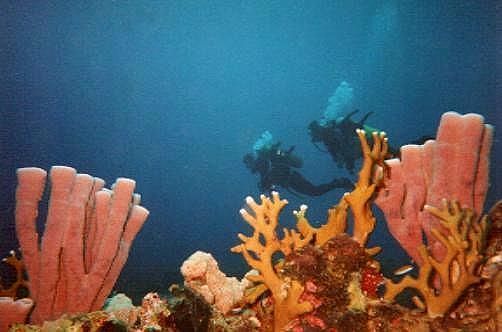Where is it?
The Red Sea is a flooded continuation of the Great Rift Valley between Africa and Arabia and is bordered on all sides by arid desert. The countries of Djibouti and Yemen form a narrow gateway to the Indian Ocean at its southern end, and Saudi Arabia makes up most of its eastern coastline. On the western side, Eritrea, Sudan and Egypt form its borders. At its northern end, it splits into two gulfs. The Gulf of Aqaba leads to Israel and Jordan. The other is the Gulf of Suez, which connects to the Suez Canal.
Popular diving
The Red Sea is extremely deep and provides startlingly good visibility because detritus sinks away to the bottom. There are times, however, mainly around April, when plankton blooms temporarily disrupt the clarity of the water. Due to its proximity to Europe and the sympathetic political nature of its government, Egypt has proved exceptionally popular with divers. The Egyptian part of the Red Sea has probably the largest and most visible leisure diving industry anywhere in the world.
People can dive from the shore, take short trips on day boats or go on extended journeys to the more remote reefs on live-aboard vessels. The fleet of live-aboard vessels for diving is the biggest in the world and boasts more than 100 boats.
Red Sea life
Despite the vast numbers of divers that visit the Red Sea each year, the diving is still good. Hammerhead sharks, whale sharks, dolphins, manta rays and turtles are regularly spotted. The oceanic whitetip shark, once the most prolific large predator on Earth, is making a comeback and is often seen patrolling the Red Sea reefs, just beneath the surface.
The reefs of the Red Sea are not only famous for their quantity of coral, but also for the varieties of different coral that grow alongside each other in such profusion. Among these, colourful soft corals are revealed in vibrant crimsons and delicate pinks as soon as a diver shines a light on them.
The fish life of the Red Sea is equally impressive, with several species that are indigenous to the area. Orange anthias flutter around the hard coral and yellow-and-black striped bannerfish gather in droves. Anemonefish bustle around their host anemones. In shallow areas where there is no coral, enormous green sea turtles graze on the sea grass. It’s the lucky diver that gets an encounter with a grazing dugong, a relative of the manatee.
For all this, most of the Red Sea is not tropical. The northern border of the tropics passes close to the border with Sudan. The sea temperature can be quite chilly in winter months, requiring divers to wear thick suits. There is a strong northwest wind, and the surface of the water is rarely calm.
Egypt has good flight connections with international airports on its Red Sea coast at Sharm el Sheikh, Hurghada and Marsa Alam.
